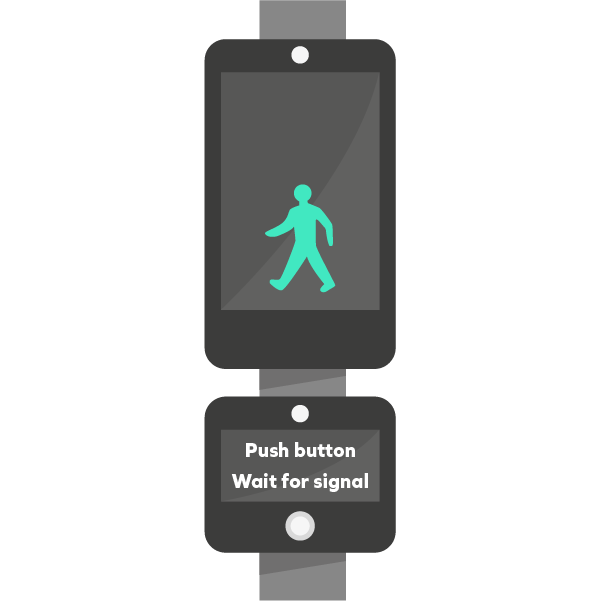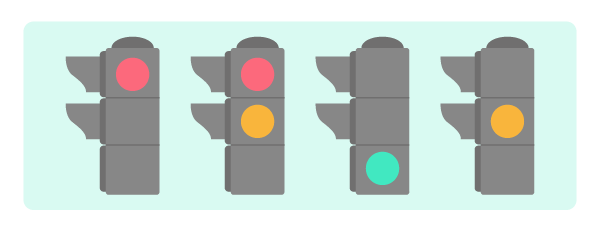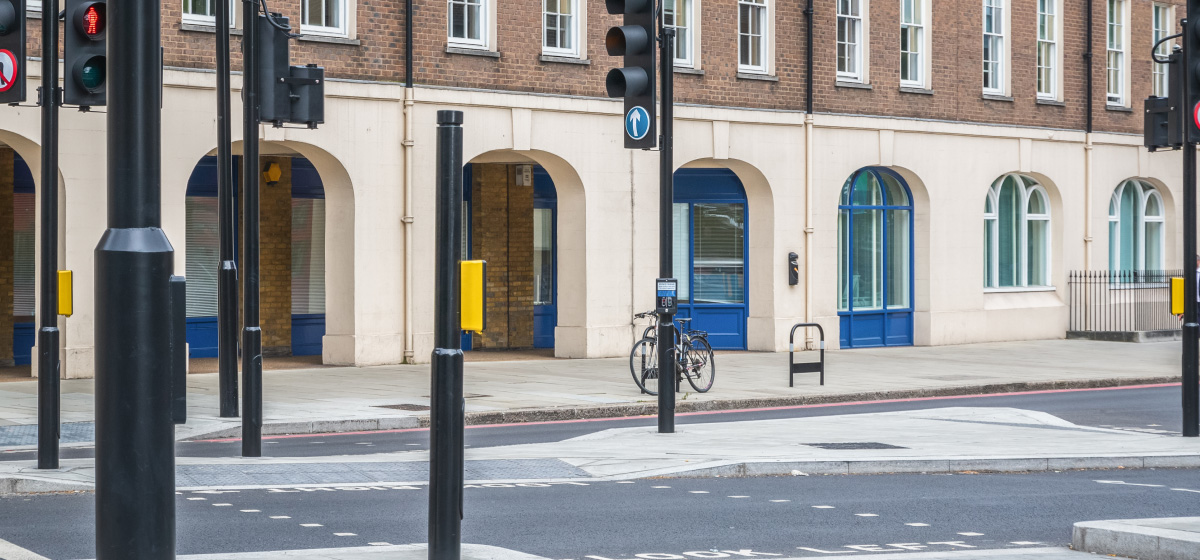A puffin crossing is one of the four types of pedestrian crossings you’ll find on UK roads. The name ‘puffin’ doesn’t come from the cute white and black birds you might see on a David Attenborough documentary. Instead, it comes from the phrase “pedestrian user-friendly intelligent” because puffin crossings have smart sensors to detect when pedestrians are crossing the road or waiting to cross the road.
You can tell a puffin crossing apart from other pedestrian crossings because of the black and yellow box with a button to press. Above it, either a green or red man will light up depending on whether pedestrians should stop or go. This black and yellow box is found on the pedestrian’s side of the road on a puffin crossing.

Puffin crossing rules
When a pedestrian approaches a puffin crossing, they’ll press the button on the box and wait until the green man lights up on the box that’s mounted on the pole at waist height. The crossing will usually make a beeping sound while the green man is on to signal to those that are visually impaired.
When the green man turns on, the traffic lights will turn red. This means it’s safe for pedestrians to cross the road and cars must wait behind the stop line at the traffic lights. The sensors will know when the pedestrian has safely crossed to the other side of the road. At this point, the red man will illuminate and traffic lights will go to red and orange and then to green.
Puffin crossing lights
The puffin crossing lights are controlled by the intelligent sensors. They’ll change when the pedestrian has finished crossing the road, rather than being controlled by pre-set intervals.
Pedestrians will either see a green man or a red man light up, which will be on a box mounted on their side of the road.
The puffin crossing light sequence for drivers is the same as a normal traffic light sequence.
Which colour follows green signal at a puffin crossing?
After the green signal, traffic lights will turn to steady amber. There’s no flashing amber because of the use of the sensors.
TIP: This is one of the possible questions on the driving theory test.

What’s the difference between a pelican and a puffin crossing?
The main difference between pelican and puffin crossings is that puffin crossings are fitted with sensors. At pelican crossings, pedestrians will press a button and wait for the traffic lights to turn to red and the green man to turn on.
When the lights are about to change, the green man will flash and the driver’s amber lights will flash. The sensors on puffin crossings mean that there’s no flashing green man and for driver’s there’s no flashing amber traffic light.
Puffin crossings are safer for pedestrians because drivers won’t be tempted to drive when traffic lights are flashing amber. They’re also better for drivers because the traffic lights will go to green once the road is clear, rather than having to wait for the pre-set interval to finish. Traffic also won’t be stopped if someone pushes the button and then walks away and decides not to cross.
Got a driving test coming up?
It’s important to know how to recognise and approach a puffin crossing for your driving test. If you’re learning to drive, you might find it helpful to get some extra practice in outside of your driving lessons. With our learner driver insurance, you could get cover from 2 hours up to 180 days. If you’re borrowing someone else’s car to learn to drive, it won’t even affect their no claims bonus if you need to make a claim.
